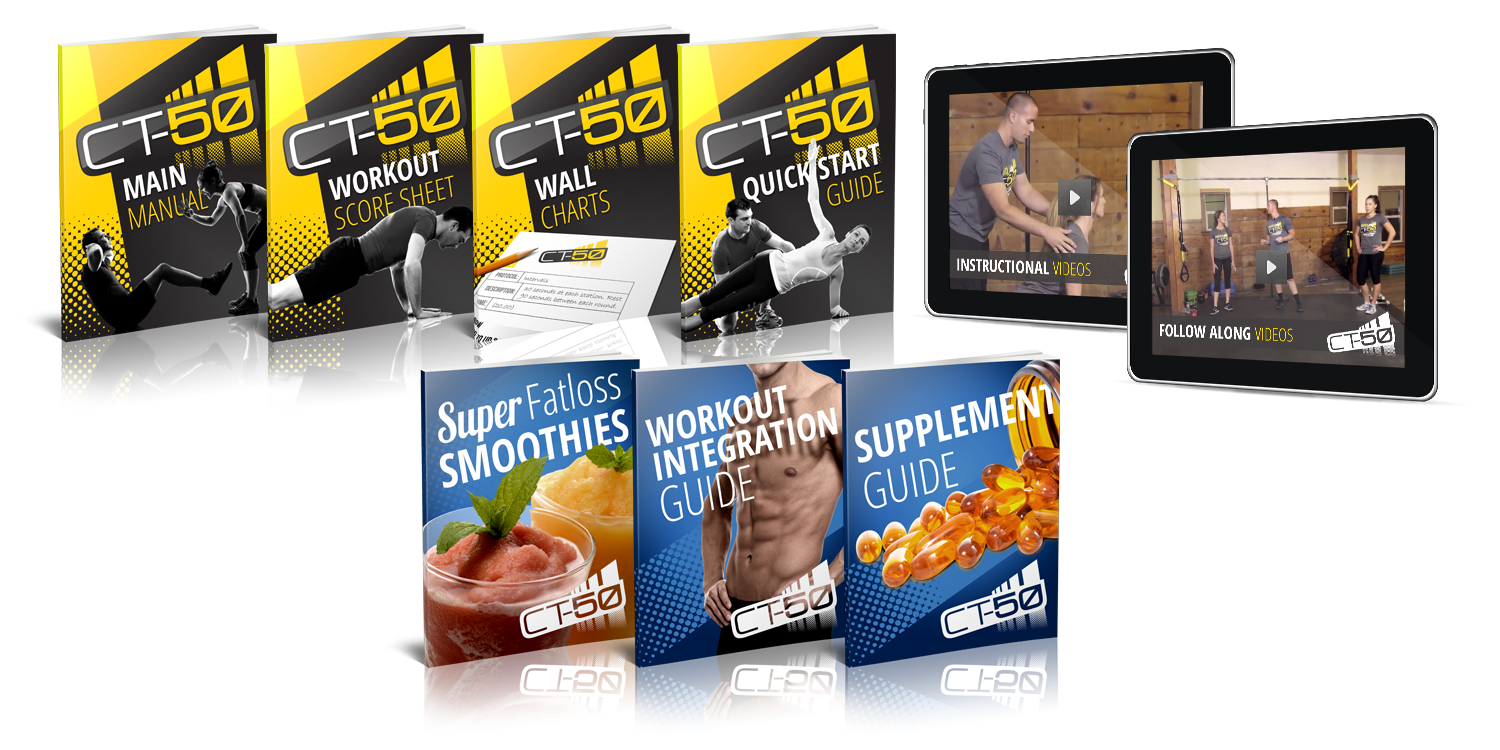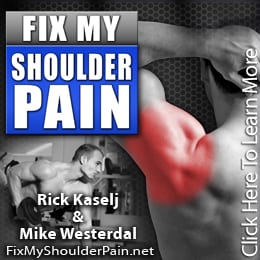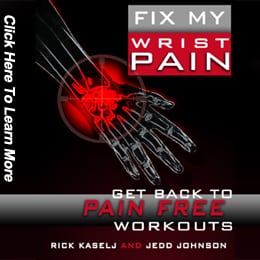How to Incorporate Progressive Movements Into Your Training
Well, I am on the road again.
I am emailing from a Starbucks in Austin, Texas.
I have a few meetings here today and then it is off to Las Vegas for another mastermind.
Before I head off to my meetings, here is part 2 of the interview that I did with Tyler Bramlett on Progressive Movement.
Rick Kaselj, MS
=======================
How to Incorporate Progressive Movements Into Your Training
Rick Kaselj: Looking at this progressive movement where we look at the movements but then in order to get results whatever that may be, it could be fat loss results, cardiovascular results, you need to end up adding intensity.
How does intensity weave into these progressive movements?
Tyler Bramlett: Brilliant. This is the coolest thing in the world, right? If you guys have been exposed to some degree of thought processor from progressive movement technology this is going to excite the crap out of you. Because ultimately you can take any exercise all the ones that we have talked about from their basic foundation and you can make them more difficult.
A simple example of it that people can get to do is the squat. We talked a lot about squat today. You can make the squat from a regular bodyweight squat to maybe a goblet squat so you add 20 or 30 lbs. to make it harder. Now you put the weight down to do something else you can add a jump to it so now you added dynamic motion to it making it even harder. You can start to take it in unilateral variations like lunges, you can add some weight to the lunges and you can turn it into a jump lunge. Then from there you can go to a complete lateral variation you can do a TRX or an assisted one legged squat. Then you can make it dynamic by adding in a jump to your one legged squat.
And let me ask you this question Rick, now that I have settled this kind of progress now who is going to have better legs, a better cardiovascular system, the guy who can do 3 sets of bodyweight squats or the guy who can do 3 sets of 10 one legged jump squats on each side?
Rick Kaselj: I would say guy number two.
Tyler Bramlett: Yeah right, it’s an obvious answer. That’s what I am trying to make a point so simple it’s that as you change your exercises your body has to change, it is called adaptation. That is how our body works and that’s how exercise in general works.
We have adapted to the stimulus that we put on our body. And I know everybody who is watching this has an experience when they went to the gym and they saw somebody doing the same damn workout over and over again for even maybe a decade.
You see that same guy in the gym, the gym rat who does the same curls for the same reps every single time and they never change, they never get any better and they never get any worse. And they are feeling satisfied because they go to the gym and they do their regular workout everyday for the last 10 years. And that’s great if that’s what you really want to do but you are not making progress and you are not becoming a better human being.
What I like to teach people about progressive movement is no matter what if you can go from basic movement patterns like we’ve talked about to more complex variations and let’s just take the ones that I have talked about, so the squat becomes assisted one legged squat. The deadlift or the hip hinge becomes a one arm snatch. The basic jump becomes a double under with the jump rope. Your bodyweight row at a really high angle becomes explosive and aggressive pull ups. Your kneeling push up becomes lateral clapping push up. Your planks become hanging leg raises.
If you go from these basic exercises to these advanced exercises, your body will change. How many people Rick do you know that can do handstand push-ups, pull ups, double unders, explosive push-ups, hanging leg raises, and good one arm snatches that have a lousy body like a straight up lousy body?
Rick Kaselj: None
Tyler Bramlett: None, right?
Rick Kaselj: Most people can’t do all that.
Tyler Bramlett: Most people can’t do all that because they don’t understand the progressions. Most people fall somewhere along the spectrum. If you are listening to this call, you are going to fall somewhere between I can do a push up against the wall and I can do reps of handstand push-ups.
And what I tried to teach people with this Rick, you are wasting your damn time if you don’t move yourself forward on this list. If all you ever do is stay on those wall push-ups and you never tried to get into the kneeling push-ups or regular push-ups or dynamic push-ups or extended push-ups or clap push-ups or lateral clap push-ups or a handstand push-up variations, then you are wasting your time because ultimately I want you to just move forward.
I don’t care if people listening to this call never ever are able to do a handstand push-up, that’s not the point. The point is we have to move you forward to whatever you are going to be capable of doing because if you do that you are going to make a better body, you are going to look, feel, and perform better, and you are going to be fit for real life; that’s what I am ultimately trying to teach them. It doesn’t matter where I am talking about ending up for these advanced levels, what matters is that you are consistently moving forward.
That’s what we do with movement progressions –— It is constantly saying “hey, you got good at kneeling push-ups well guess what, we are going to do regular push-ups now. You got good with regular push-ups, guess what, we are going to add some dynamic nature to those now” because people should consistently be moving forward.
And ultimately what you have to realize too is that oftentimes with progressive movement I am taking people back to the basics. So somebody might already be able to do a clap push up and I might say oh no you have no core stability, you don’t know how to fire your glutes enough in that position, your shoulders are all jacked up, we are starting with kneeling push-ups. And you make them do slow and controlled kneeling push-ups and they are dying because you are forcing them to do it correctly and then they progress back to where they are at.
Oftentimes with athletes we bring them back and build them back up. And then with regular people we start them with the basics and we build them towards as far as they can, as far as they can handle with perfect forms. I hope that makes my point because I know a lot of people here like the advanced stuff and they say most people can’t do that but even if you are half that good, your body is going to change if you started here.
Rick Kaselj: Awesome. One last formal question — How does resistance or weight play a role when it comes to the progressive movements? You start off with the bodyweight and then add external resistance, how does that play a role when it comes to progressive movements?
Tyler Bramlett: You can add external load to any bodyweight movements and make it more complex and that is something certainly cool. What I prefer to do with people is I prefer to bring them up, let me just back track this thing a bit. The way I like to divide training in my mind when I program for other people is into two categories: Are you getting better at moving your body? or Are you getting better in moving something outside of your body? That’s all we have really.
Are you getting better at moving this shit or are you getting better in moving yourself? And so I break that down into two categories and ultimately we have the bodyweight camp who is like “bodyweight, bodyweight, only bodyweight,” that’s great, but then you tell them to do a deadlifter snatch and they got nothing. In vise versa you got the weight lifters “weights, weights, weights training” and then you tell them to do hanging leg raises or some more complex bodyweight exercises and they can’t do it. You have to do both. Let me just clear it from the start, you have to do both.
What I like to do for best results is to progress people to a basically the best level of movement capacity that they can with each exercise.
For weights, let me give you an example. We talked about hip hinge, so somebody needs to learn how to do a deadlift with a dumbbell or a kettlebell first. They need to learn how to do that properly with good form and proper muscle activation. From there, I transitioned that into a dynamic movement like the swing so we might learn the swing with two hands again.
While we are doing the swing we might work on some unilateral deadlift so like single arm deadlifts to kind of touch that core unilaterally and getting you prepared for some of that single arm work that we are going to do in the future. So it goes deadlifts to swings and sometimes with the swings they practice with one arm deadlifts and then they go to one arm swings and they will typically go to one arm high pulls and then they go to one arm snatches.
And once somebody is capable of doing those basic patterns then we can start loading those progressively because they have earned the movement capacity first. Once you master a movement you can increase the complexity of that movement by adding resistance. Does that make sense?
Rick Kaselj: Yes.
Tyler Bramlett: Like you can do a deadlift, you can start adding the deadlift and you can also start working on your next movement step. And for bodyweight stuff I really think that when people are adding resistance to bodyweight other than maybe like goblet jump squats or jump lunges with a little kettlebell or dumbbell, when you are adding load to bodyweight movements I think you should really be focusing on just getting better at your bodyweight movements.
A lot of times when people are doing squats and keep adding resistance to the squats, I like people to do one legged squats even without assistance. I have trained a lot of people who would have never thought that they could do a one legged squat or do a one legged squat. And now I would put their knees stability, hips stability, their lower body strength, and endurance out there with somebody who might be able to back squat a ton of weight because they have to stabilize themselves in so many planes of motion. It doesn’t mean that they should never squat. I think that’s a great component because they have already mastered basic squat but it doesn’t mean that they shouldn’t keep progressing up the ladder in terms of complexity at the same time.
Now that being said, there’s a point where complexity gets ridiculous, right? I think we have talked about this in the last interview. I have this analogy Rick, that it’s like a guy who is on a bosu ball and he has his pink dumbbells and there’s a band on his knee and he is doing a rotator cuff with a pink dumbbell, I think that is just ridiculous. You never ever have to do that in real life. But standing on one leg when you are hiking you might even lift your leg up really high put it in a boulder and stand on it for a minute, that’s a one legged squat or a lunge kind of movement. That’s a fundamental movement pattern.
Standing on a squishy ball rolling from side to side is only going to make you better at standing on a squishy ball from side to side, there’s no adaptation other than that. But if you want to be good at standing on a ball and rolling from side to side, that’s fine. You can do that all day long.
I’d rather focus on real movement patterns, which I have described in the past and on this call, real functional training, real things that you should be doing in real life that actually are real body movement patterns. I hope that answered the question there.
Rick Kaselj; That’s awesome. I have run out of questions, is there any like last minute things that you would like to leave people with?
Are there any last tips or questions that I didn’t ask of you that you want to answer?
Tyler Bramlett: Right. I think we have talked about progression this whole time. We’ve talked about a lot of exercises I gave like the quick snippet with jump varieties and nutrition but ultimately there is spectrum at where you are at.
If we take a total beginner who is fat, sick, tired, unhealthy, and maybe nearly dead, and the advanced health practitioner athlete who can do amazing things with their body has done fitness nutrition and so on and so forth, you fall somewhere in that spectrum. You fall somewhere along that line.
What I am trying to teach people is just that they need to keep moving forward. If you slip backwards on your nutrition, take note of that and push it up. We are all human. I am not sitting here saying that I am an elite athlete. I have to learn every single exercise just like I am talking about with you. I have to learn them through a series of progressions. I had to learn diet through a long series of progressions and challenges I might say because diet is very challenging to master.
Rather than overwhelming yourself by focusing on like “Oh, next week I am going to start going to the gym two hours a week. I am on a diet. I am going to get more water. I am going to get more sleep at night,” take it in baby steps like follow a progressive movement training program that is intelligently designed so that way you can know if you are on a good track for making continual progress over time.
As the workouts change your body changes then follow a logical progression on your diet so set 1 goal, drink more water, chew your food more, eat protein for breakfast, or maybe go on organic. Start watching your protein intake throughout the day or drop your carbs down a little bit if you are extremely overweight. There are billions of different ways to do it.
The point is people do too much at once and nothing sticks. They don’t make any change. All that I could teach you how to do is okay squat perfect, plank perfect, push up perfect, row perfect, pull up perfect, press perfect, hinge to the hips perfect, do some core stability perfect, and just try to eat real foods diet, drink more water, and sleep better, and chill out…that’s the foundation!
If you don’t have those things mastered, what the heck are you doing with all of these other programs? What the heck are you doing with all of these outside stuffs? You need to master the basics so that you can move on to the next step. And too many people just forget about that, they are going on too far too fast. You fall in that spectrum. Keep moving forward on everything that you have control over with.
Rick Kaselj: Awesome. Tyler, where can people get more information about you?
Tyler Bramlett: You can find my new website at CT-50.com that’s the new progressive program that I have just released. I am really excited about that Rick because this has been in the back of my head for two and a half years now. I finally partnered with a company that has the resources to put it into reality.
I simply couldn’t have done this project without my team. I am so grateful and I think honestly it is going to change the fitness industry. I am so excited about it because it is so unique and it is so new and I think people are going to really eat it up.
Aside from that, I can put my head on the pillow at night and sleep knowing that this program is legitimately going to help people. It is not another P90X that most people just put in their drawer and never use it. I am really excited about that.
Rick Kaselj: That CT-50 kind of expands on what we’ve talked about like in application and in practice.
Tyler Bramlett: Exactly. It’s a step by step process. It is really simple. We have subdivided every single exercise that we have on the program into 5 different levels of difficulty starting at level 1 ending at level 5. You go through the workout cycle. There are 10 workouts per level and there is one of those workouts being a challenge workout so this way we can balance whether or not you can actually progress to the next level. It is really cool Rick that you go through 9 workouts and then you get to your challenge workout and you track your score on that workout. If it is above 400 total reps on the workout, you go to level 2. If it is below 400, you go back to the cycle and try again in the next time around.
All you got to do is follow the workout. If you get 400 in your challenge workout, then you go to the next level. If you don’t, you start with the workouts again. That’s our way of basically saying if you hit this score on this particular workout, we believe that you have the capacity to go on to the next exercise or the next set of workouts. And each level gets progressively more difficult but it doesn’t require more resistance.
The program is laid out to get a pull up bar, a pair of rings, a TRX, and a dumbbell, that’s literally what we want you to have. And even if it is a light dumbbell, well guess what, when you start with 20 lbs. dumbbell you are doing deadlifts and then in the end you are doing one arm snatches at a high intensity. That just becomes more of a movement complexity thing.
If you want to repeat the program and add a bunch of weights to the dumbbell, that’s fine with me. I like using 50 lbs. for all of these workouts. It just removes all the every breaks from people understanding progressive movement and puts them into a really simple to digest format so all they have to do is follow the workouts. Test yourself once every 10 workouts and see if you are ready to move on to the next level.
Rick Kaselj: Awesome. Thank you very much for your time Tyler.
Tyler Bramlett: Sure thing brother. I appreciate you having me on the call again.
Rick Kaselj: No worries. Thank you everyone at Exercises for Injuries readers, listeners, and viewers.
This is Rick Kaselj from ExercisesForInjuries.com, Make sure to swing by ExercisesForInjuries.com, enter in your injury or pain, there’s a good chance that I have a video, article, or interview when it comes to your injury or pain.
Also if you are watching this on YouTube, head up above and hit subscribe. What that would do is every couple of days you will get an interview or a video when it relates to injury and pain or you will end up getting a guest video from one of my friends in the health and fitness world.
Lastly, make sure to head down below and hit LIKE and leave myself and Tyler a comment or question. We will make sure that we get back to you.
That’s it! This is Rick Kaselj from ExercisesForInjuries.com. Now if you want more details on program that goes into detail about progress movement, check out Tyler’s new program called CT-50:
Rick Kaselj, M.S




